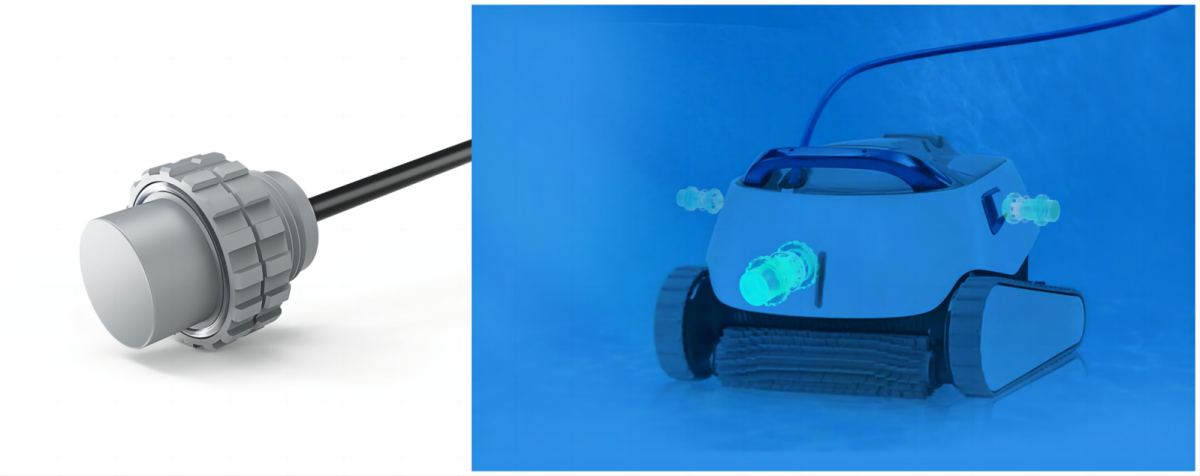Pools that provide swimming activities for people must be kept clean and hygienic. Usually, the pool water is replaced regularly, and the pool is cleaned manually. In recent years, some developed countries and regions have adopted automatic mechanical equipment – swimming pool automatic cleaning machine, which can automatically clean the swimming pool without discharging the pool water, which not only saves precious water resources, but also replaces the Heavy labor by manual cleaning of the pool.
The existing swimming pool cleaning robot works mainly by placing the robot in the swimming pool. The robot moves randomly in one direction and turns around after hitting the swimming pool wall. The robot moves irregularly in the swimming pool and cannot clean the swimming pool well.
In order for the swimming pool cleaning robot to autonomously clean each area of the pool bottom, it must be allowed to walk in accordance with a certain line of route rules. Therefore, it is necessary to measure the real-time position and status of the robot. So that it can sends out reasonable motion commands according the information independently.
It allows the robot to sense its position in real time, Here an underwater ranging sensors are needed.
■ Measuring Principle of Underwater Ranging and Obstacle Avoidance Sensor
The underwater obstacle avoidance sensor uses ultrasonic waves to transmit in water, and when it meets the measured object, it is reflected back, and the distance between the sensor and the obstacles is measured and transmitted to ships, buoys, underwater unmanned vehicles and other equipment, which can be used for obstacle avoidance, and can also be used for underwater ranging.
Measuring principle: The ultrasonic wave emitted by the ultrasonic probe propagates through the water, encounters the measured target, and returns to the ultrasonic probe through the water after reflection, because the time of emission and reception can be known, according to this time × sound speed ÷ 2=The distance between the transmitting surface of the probe and the measured target.
Formula: D = C*t/2
(Divided by 2 because the sound wave is actually a round trip from emission to reception, D is the distance, C is the speed of sound, and t is time).
If the time difference between transmission and reception is 0.01 second, the speed of sound in fresh water at room temperature is 1500 m/s.
1500 m/s x 0.01 sec = 15 m
15 meters ÷ 2 = 7.50 meters
That is to say, the distance between the transmitting surface of the probe and the measured target is 7.50 meters.
■ Dianyingpu Underwater ranging and obstacle avoidance sensor
The L04 underwater ultrasonic ranging and obstacle avoidance sensor is mainly used in underwater robots and installed around the robot. When the sensor detects an obstacle, it will quickly transmit the data to the robot. By judging the installation direction and the returned data, a series of operations such as stop, turn, and deceleration can be performed to realize intelligent walking.
Product advantages:
■ Measuring range: 3m, 6m, 10m optional
■ Blind zone: 2cm
■ Accuracy: ≤5mm
■ Angle: adjustable from 10° to 30°
■ Protection: IP68 overall molding, can be customized for 50-meter water depth applications
■ Stability: adaptive water flow and bubble stabilization algorithm
■Maintenance: remote upgrade, sound wave restore troubleshooting
■ Others: water outlet judgment, water temperature feedback
■ Working voltage: 5~24 VDC
■ Output interface: UART and RS485 optional
Click here to learn about the L04 underwater ranging sensor
Post time: Apr-24-2023

